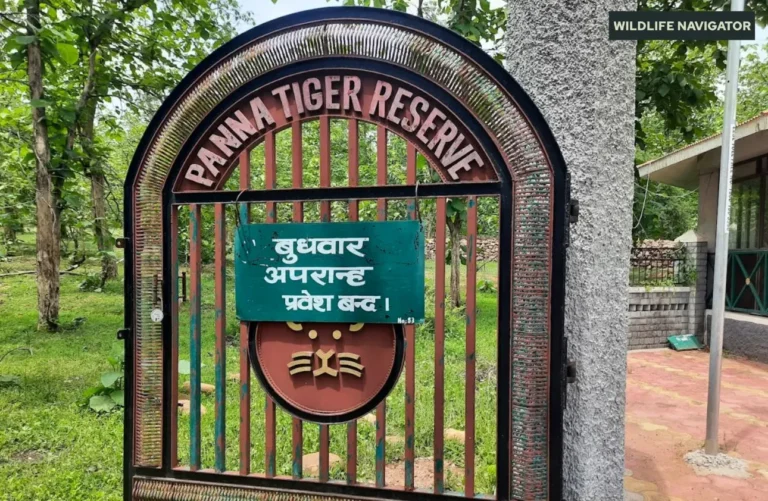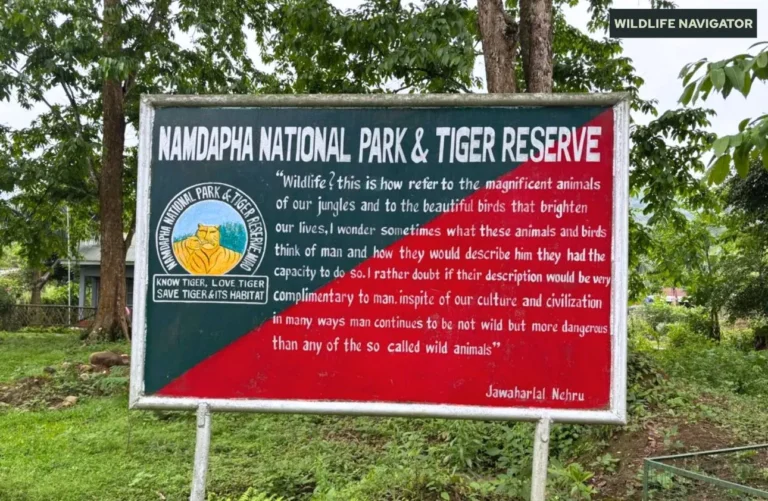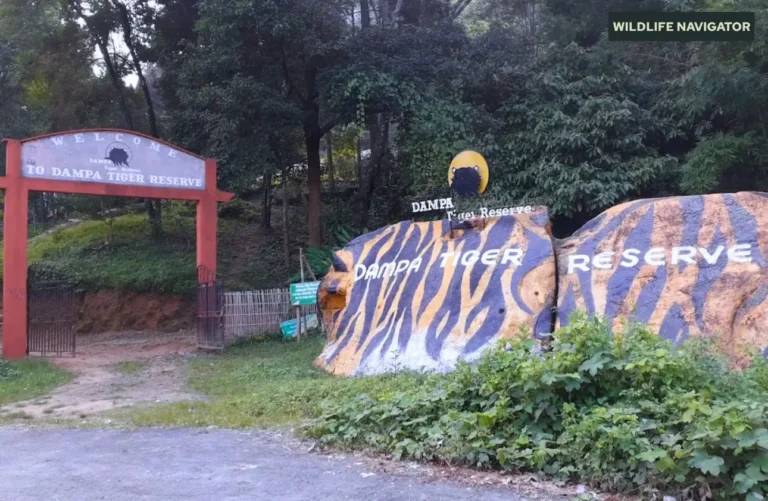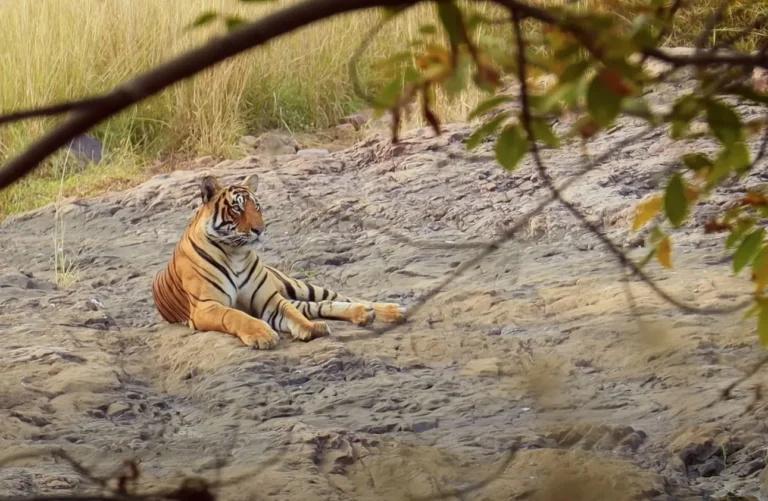Kawal Tiger Reserve: Telangana’s First Tiger Sanctuary and Wildlife Haven
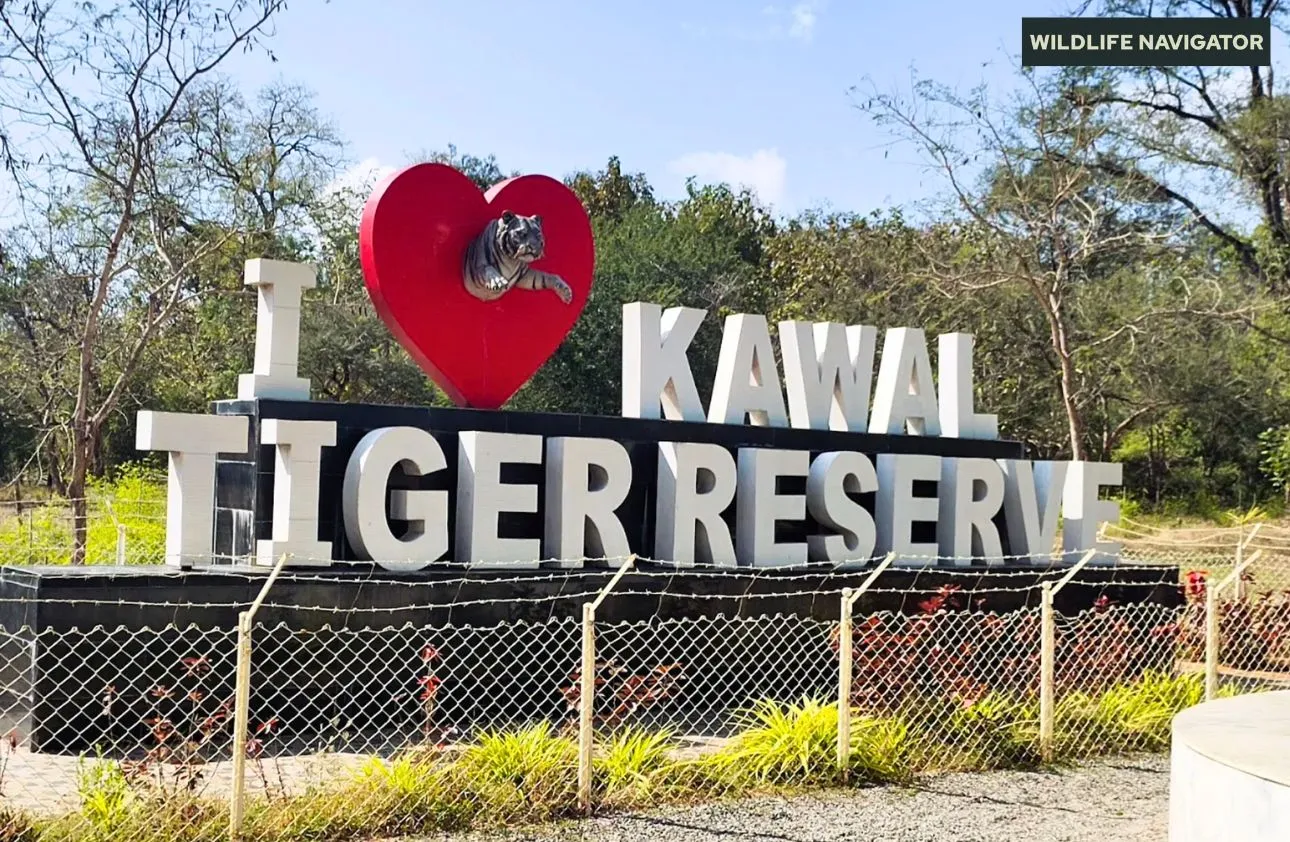
Kawal Tiger Reserve, located in the northern region of Telangana, is one of India’s most promising wildlife destinations and an essential part of the country’s tiger conservation landscape. Spread across the Mancherial District, this protected area is renowned for its rich biodiversity, dense forests, and the tranquil charm of its natural surroundings. Declared as Telangana’s first tiger reserve in 2012, Kawal plays a crucial role in safeguarding not just the Bengal tiger but also the intricate web of life that thrives within its vast ecosystem.
The reserve forms a vital link in the network of tiger reserves in India, serving as a southern extension of the Central Indian landscape that connects major reserves like Tadoba-Andhari, Indravati, and Satpura. Its varied terrain — from dry deciduous forests to riverine tracts — supports an abundance of flora and fauna, offering visitors an authentic wilderness experience.
For wildlife enthusiasts and conservationists alike, Kawal Tiger Reserve stands as a symbol of hope — a landscape where nature continues to reclaim its rhythm, where tigers roam free, and where every rustle in the forest tells a story of survival and balance.
1. History and Establishment
The story of Kawal Tiger Reserve is deeply tied to the administrative and ecological evolution of southern India. Originally notified as a Wildlife Sanctuary in 1965, Kawal’s rich biodiversity and critical habitat for large carnivores soon drew national attention.
Recognising its importance as a natural corridor linking the forests of Maharashtra, Chhattisgarh, and Telangana, the Government of India declared it a Tiger Reserve in 2012 under the prestigious Project Tiger initiative.
At that time, Telangana had not yet been carved out from United Andhra Pradesh, and thus Kawal became the 42nd Tiger Reserve of India under Andhra Pradesh’s administration. Two years later, when Telangana was officially formed on June 2, 2014, Kawal automatically became Telangana’s first tiger reserve, as it lay entirely within the new state’s boundaries.
Following the bifurcation, the Amrabad Tiger Reserve—earlier a part of the massive Nagarjunasagar–Srisailam landscape—was also allocated to Telangana, making it the state’s second tiger reserve. This transition marked a new chapter in Telangana’s conservation history, with Kawal symbolising both ecological heritage and a renewed commitment to wildlife protection.
Today, Kawal continues to play a pivotal role in India’s conservation network, standing as a bridge between Central and Southern India’s tiger landscapes and preserving an invaluable part of the Deccan’s natural legacy.
2. Geography and Landscape
2.1 Location and Extent
Kawal Tiger Reserve is located in the Mancherial and Nirmal districts of northern Telangana, forming part of the Deccan Plateau’s eastern edge. The reserve covers an area of around 2,015 sq km, including a core zone of 893 sq km and a buffer zone of 1,122 sq km. It lies within the Godavari River basin, making it an ecologically vital region that supports multiple forest and riverine ecosystems.
2.2 Topography and Terrain
The terrain of Kawal is marked by undulating plains, low hills, and narrow valleys, offering a visually diverse landscape. Scattered hillocks, plateaus, and rocky outcrops provide ideal habitats for carnivores and herbivores alike.
Key physical features include:
- Altitude range: 200–600 meters above sea level
- Major rivers: Kadam River and its tributaries, which nourish the reserve and support life during dry months
- Soil types: Predominantly red sandy loam and black cotton soil, favourable for dry deciduous vegetation
2.3 Climate
Kawal experiences a tropical climate, with hot summers, moderate winters, and seasonal monsoons.
- Summer (March–June): Temperatures can soar above 40°C
- Monsoon (July–September): Receives 1,000–1,200 mm rainfall annually
- Winter (November–February): Pleasant weather, ideal for safaris and exploration
2.4 Ecological Significance
Geographically, Kawal acts as a biological corridor connecting the Tadoba-Andhari Tiger Reserve in Maharashtra to the Indravati Tiger Reserve in Chhattisgarh. This corridor is vital for maintaining genetic exchange among tiger populations and ensuring their long-term survival.
The landscape’s combination of dense teak forests, grasslands, and water bodies supports a mosaic of wildlife habitats. This diversity not only makes Kawal crucial for tiger conservation but also enhances its value as a rich natural heritage site in southern India.
3. Flora of Kawal Tiger Reserve
3.1 A Green Haven of the Deccan Plateau
Kawal Tiger Reserve lies within the tropical dry deciduous forest zone, characteristic of the Deccan Plateau. The vegetation here reflects a delicate balance between dry and moist ecosystems, thriving on the reserve’s varied soil and climatic conditions. During the monsoon months, the landscape turns lush green, while in summer, the forest adopts a golden hue, revealing its stark yet beautiful dry-season charm.
3.2 Dominant Vegetation Types
The forest composition in Kawal is primarily mixed deciduous, with patches of teak-dominated woodland interspersed with bamboo groves and open grasslands. The vegetation plays a vital role in regulating the local climate, preventing soil erosion, and providing food and shelter for wildlife species.
3.3 Major Tree Species
Some of the most common and ecologically important plant species found in the reserve include:
- Teak (Tectona grandis) – The dominant species, forming vast stands across the reserve.
- Terminalia species – Including Terminalia tomentosa and Terminalia arjuna, providing dense canopy cover.
- Pterocarpus marsupium (Indian Kino Tree) – Valued for both ecological and medicinal importance.
- Boswellia serrata (Indian Frankincense) – Grows on rocky slopes, contributing to the forest’s resilience.
- Dalbergia latifolia (Indian Rosewood) – A rare hardwood species found in mixed stands.
- Madhuca indica (Mahua) – An important tree for both wildlife and local tribal communities.
- Bamboo and Grasses – Provide critical food sources for herbivores like deer and antelopes.
3.4 Seasonal Variation
- Monsoon (July–September): Forests burst into dense greenery, streams flow, and the undergrowth thrives.
- Winter (November–February): The forest remains moderately green, with pleasant temperatures ideal for safaris.
- Summer (March–June): Many trees shed their leaves, making it easier to spot wildlife in open patches.
3.5 Ecological Role
These plant communities form the backbone of Kawal’s ecosystem — supporting herbivores, offering camouflage for predators, and maintaining the reserve’s ecological balance. Together, they create a resilient forest system that sustains life even in challenging climatic conditions.
4. Fauna of Kawal Tiger Reserve
4.1 A Sanctuary of Diverse Wildlife
Kawal Tiger Reserve shelters a rich and vibrant range of fauna, making it one of the most promising wildlife landscapes in southern India. Its varied forest types, hilly terrain, and riverine ecosystems support both predators and prey species, sustaining a balanced food web crucial for tiger survival.
The reserve’s ecological corridor connects it to Tadoba-Andhari (Maharashtra) and Indravati (Chhattisgarh), allowing tigers and other large mammals to migrate freely — a key factor in long-term conservation success.
4.2 Major Mammals
The forests of Kawal are home to an impressive variety of mammals, from elusive big cats to graceful herbivores.
Predators:
- Bengal Tiger (Panthera tigris tigris) – The flagship species and top predator of the reserve.
- Indian Leopard (Panthera pardus fusca) – Often spotted in hilly areas and dense forests.
- Sloth Bear (Melursus ursinus) – Known for its nocturnal foraging habits.
Herbivores:
- Sambar Deer (Rusa unicolour) – A primary prey species for tigers.
- Chital or Spotted Deer (Axis axis) – Found in open woodlands and grasslands.
- Nilgai (Boselaphus tragocamelus) – India’s largest antelope, seen near forest edges.
- Wild Boar (Sus scrofa) and Four-horned Antelope (Tetracerus quadricornis) – Common across the reserve.
Other Mammals:
- Indian Gaur (occasionally sighted),
- Indian Palm Civet,
- Small Indian Mongoose,
- Hanuman Langur, and
- Indian Flying Fox.
4.3 Avian Diversity
Kawal is a paradise for birdwatchers, with more than 280 recorded bird species inhabiting its forests and water bodies.
Common and Notable Birds:
- Indian Peafowl
- Grey Junglefowl
- Crested Serpent Eagle
- Oriental Honey Buzzard
- Malabar Pied Hornbill
- Green Bee-eater
- Rose-ringed Parakeet
- Drongos, Woodpeckers, and Barbets
During winter, migratory birds such as Egrets, Herons, and Ducks frequent the wetlands and riverbanks, adding colour and life to the reserve’s landscape.
4.4 Reptiles and Amphibians
The warm, semi-arid conditions of Kawal also support a healthy reptilian population.
Common Reptiles:
- Indian Cobra
- Russell’s Viper
- Common Krait
- Monitor Lizard
- Indian Rock Python
- Garden Lizard
Amphibians like common toads and tree frogs thrive near seasonal streams and ponds during the monsoon months.
4.5 An Emerging Tiger Habitat
Although tiger numbers in Kawal are still modest, the reserve serves as a crucial dispersal area for tigers from nearby landscapes such as Tadoba-Andhari and Indravati. With continuous habitat restoration and corridor protection, Kawal is steadily evolving into a stronghold for the southern central Indian tiger population, promising a brighter future for the species in Telangana.
5. Conservation Efforts and Challenges
Kawal Tiger Reserve is a focal point for India’s tiger conservation efforts under Project Tiger and the National Tiger Conservation Authority (NTCA). Authorities actively monitor tiger populations, maintain forest patrols, and implement anti-poaching measures to safeguard wildlife. Habitat restoration initiatives, including waterhole creation and grassland management, help support herbivores and predators alike.
Local communities are engaged through eco-development programs, promoting sustainable livelihoods and reducing human-wildlife conflict. Awareness campaigns encourage villagers to participate in forest protection, making conservation a shared responsibility.
Despite these efforts, Kawal faces challenges such as poaching, habitat fragmentation, and human-wildlife conflict. Encroachment and seasonal fires also threaten the delicate forest ecosystem. Continued vigilance, scientific monitoring, and community cooperation remain essential to ensure Kawal Tiger Reserve thrives as a safe haven for tigers and other wildlife.
6. Best Time to Visit Kawal Tiger Reserve
The ideal time to explore Kawal Tiger Reserve is from November to April, when the weather is pleasant and wildlife sightings are more frequent.
- Winter (November–February): Cool temperatures (15–25°C) make safaris comfortable, and animals are easier to spot near waterholes.
- Early Summer (March–April): Dry conditions improve visibility, allowing photographers to capture tigers, leopards, and other wildlife in open patches.
Avoid the monsoon season (July–September), as heavy rains can make forest trails slippery and restrict safari movement.
For birdwatchers, late winter to early spring is perfect to observe both resident and migratory species, while photographers and wildlife enthusiasts can enjoy the forest’s natural beauty year-round outside the rainy months.
7. Safari Experience and Entry Points
Kawal Tiger Reserve offers an immersive wildlife experience for visitors, with jeep safaris, guided tours, and walking trails providing opportunities to explore its rich biodiversity. Safaris are the best way to observe tigers, leopards, sloth bears, and a variety of herbivores and birds in their natural habitat.
7.1 Entry Gates and Zones
The reserve has multiple entry points to accommodate tourists:
- Jannaram Gate: Closest to the core zone, ideal for tiger sightings.
- Mancherial Gate: Well-connected by road, serves as the main administrative entry.
- Nirmal Gate: Offers access to buffer zones and birding hotspots.
Each gate has designated safari zones with trained guides to ensure both safety and an enriching experience. The core zone is strictly regulated to minimize human disturbance, while buffer zones allow for eco-tourism activities and guided walks.
7.2 Safari Timing and Permits
- Morning Safari: 6:00–10:00 AM — best for wildlife sightings as animals are most active.
- Evening Safari: 3:30–6:30 PM — ideal for photography and spotting nocturnal species near waterholes.
- Permits: Must be obtained from the Telangana Forest Department or online booking portals. Advance booking is recommended, especially during peak tourist season (November–March).
7.3 Wildlife Watching Tips
- Binoculars and cameras with zoom lenses enhance viewing experiences.
- Maintain silence during drives; sudden noise can scare away wildlife.
- Guides often provide insightful commentary on animal behaviour, forest ecology, and conservation efforts.
7.4 Additional Experiences
- Birdwatching: Kawal hosts over 280 bird species, including peafowl, hornbills, and migratory waterbirds.
- Nature Trails: Short treks in the buffer zone reveal endemic plants, insects, and smaller mammals.
- Photography: Open grasslands and dry deciduous forests offer excellent light for wildlife photography.
Safaris in Kawal are not just sightseeing trips — they are educational and conservation-oriented experiences, allowing visitors to appreciate the delicate balance of this thriving ecosystem while supporting the reserve’s protection initiatives.
8. How to Reach Kawal Tiger Reserve
Kawal Tiger Reserve is well-connected by road, rail, and air, making it accessible for wildlife enthusiasts from across India.
8.1 By Air
The nearest major airport is Rajiv Gandhi International Airport (HYD) in Hyderabad, approximately 270 km from Kawal.
- From Hyderabad, travellers can hire taxis or take buses toward Mancherial or Jannaram, with a journey of around 5–6 hours.
- While Hyderabad is the primary hub, smaller regional airports in Nagpur (Maharashtra) can also be used, though road travel from there is longer (~350 km).
8.2 By Train
Rail travel is a convenient option for reaching the reserve:
- Nearest Railway Station: Mancherial (approx. 50 km from Kawal).
- Mancherial is well-connected to major cities such as Hyderabad, Nagpur, and Secunderabad.
- From the station, taxis or forest department vehicles can be hired to reach the entry gates.
8.3 By Road
Kawal is accessible via well-maintained highways and rural roads:
- From Hyderabad: Take NH44 north toward Mancherial, passing Nirmal; approximately 270 km (5–6 hours).
- From Adilabad: Around 120 km via state highways, offering scenic countryside views.
- From Nirmal: About 75 km, convenient for day trips or safari entry.
8.4 Travel Tips
- Roads leading to the core and buffer zones can be narrow and uneven; SUVs or sturdy vehicles are recommended.
- Public buses connect Hyderabad and Adilabad to nearby towns, but private taxis or forest-approved vehicles are preferred for comfort and flexibility.
- Ensure prior booking for safaris, as entry is regulated and dependent on forest department permits.
By combining air, rail, and road travel, visitors can plan a smooth journey to Kawal Tiger Reserve, ensuring maximum time for wildlife exploration and nature immersion.
9. Accommodation Options
Visitors to Kawal Tiger Reserve can choose from a mix of forest-run lodges, Telangana Tourism resorts, and nearby private accommodations, depending on their preferences and budget. Staying close to the reserve ensures early morning safari access and an immersive forest experience.
9.1 Forest Rest Houses
- Jannaram Forest Rest House: Located near the core zone, ideal for early safaris and wildlife photography. Basic amenities, clean rooms, and close proximity to tiger sightings make it a popular choice.
- Nirmal and Mancherial Rest Houses: Located near buffer zones, offering comfortable lodging with easy access to forest trails.
9.2 Telangana Tourism Haritha Resorts
- Offers modern facilities such as AC rooms, dining, and guided tours.
- Haritha Resort, Mancherial: Strategically located for visiting Kawal and nearby attractions.
- Eco-friendly practices like rainwater harvesting and local cuisine make stays more sustainable.
9.3 Private Eco-Lodges and Nature Camps
- Several eco-lodges and camps near the reserve provide a rustic, close-to-nature experience.
- Ideal for photography enthusiasts, birdwatchers, and families seeking tranquility.
- Offer activities like guided forest walks, birdwatching, and cultural experiences with local tribes.
9.4 Tips for Booking
- Reserve well in advance, especially during peak tourist season (November–March).
- Check if the accommodation offers pickup from entry gates for safari convenience.
- Staying within or near buffer zones supports local communities and encourages responsible tourism.
Whether you prefer basic forest lodges or comfortable resorts, Kawal Tiger Reserve offers accommodation options that complement its wildlife experience, allowing visitors to relax after a day of exploration in this thriving natural sanctuary.
10. Conclusion
Kawal Tiger Reserve stands as a vital sanctuary for tigers and biodiversity in northern Telangana, offering a rare glimpse into the rich wildlife of the Deccan Plateau. As the state’s first tiger reserve, it plays a crucial role in connecting central and southern tiger landscapes, ensuring genetic exchange and long-term survival of the species.
Beyond tigers, Kawal’s dense forests, riverine ecosystems, and diverse flora and fauna make it a treasure trove for wildlife enthusiasts, birdwatchers, and nature photographers. Guided safaris, eco-lodges, and forest rest houses allow visitors to explore the reserve responsibly, while contributing to ongoing conservation efforts.
By protecting habitats, supporting eco-tourism, and engaging local communities, Kawal exemplifies how conservation and sustainable tourism can go hand in hand. For anyone passionate about wildlife and natural landscapes, Kawal Tiger Reserve promises an unforgettable journey into one of Telangana’s most pristine and thriving ecosystems.
